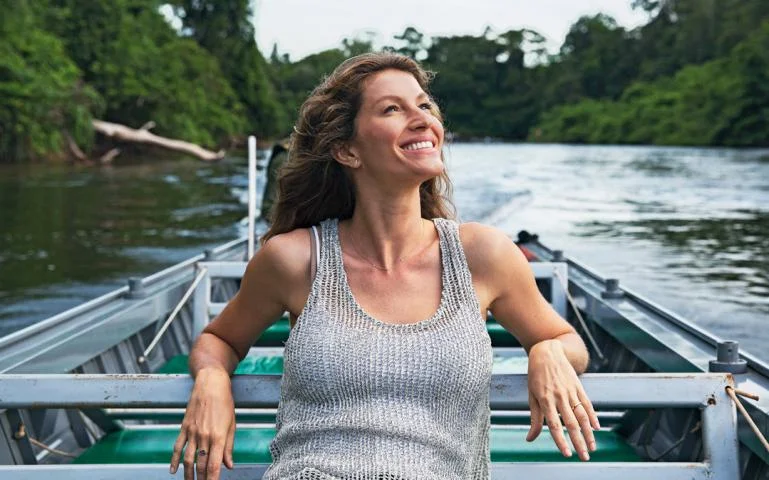'Years of Living Dangerously', Gisele's National Geographic Series On Climate Change in Amazon
/Gisele in the Amazon, talking climate change for National Geographic
Brazilian supermodel Gisele Bündchen is among the most successful talents of all time. Gisele continues to dominate the Forbes Highest-earning Models List in 2016, with an estimated earnings of $30.5 million last year.
Not everyone knows that Bündchen has been a dedicated environmentalist for many years. Next week the opening ceremonies star of the Rio Olympics takes cameras with her on an expedition into her home country. Starring in an episode of the award-winning National Geographic Channel series 'Years of Living Dangerously', Gisele next week directs an expedition deep into the Brazilian rain forest for a closeup view of deforestation and its effects on climate change. She explains:
In my episode, the viewers will be taken on a trip through the Amazon, where they will learn about the major forces threatening the rain forest and the consequences of that for the planet and for all of us. It will show how the Amazon rain forest has a vital role in balancing the earth’s climate. The forest filters massive amounts of carbon dioxide in our atmosphere; it acts as an air conditioner for our planet by emitting vapor and creating rain, and it is home to the largest biodiversity on our planet. The consequences of not having the rain forest are unthinkable.
Gisele in the Amazon rainforest, talking climate change impact on trees for National Geographic.
Gisele recalls her first trip into the rain forest in 2004, where she stayed with a native Amazonian tribe.
The indigenous people faced many problems due to deforestation and its ramifications. Things like mercury from mining and the pesticides used on crops were washed into the rivers, making some of their freshwater toxic and creating many health issues for the tribes. Their survival comes from the water and fish those rivers provide, and their precious life sources were being destroyed. There is no life without clean water. I felt I had to do something to help, so I began to learn more about it and started to support different environmental projects, including projects in the Amazon, and I’ve also created the Água Limpa (Clean Water) Project in my hometown of Horizontina.


